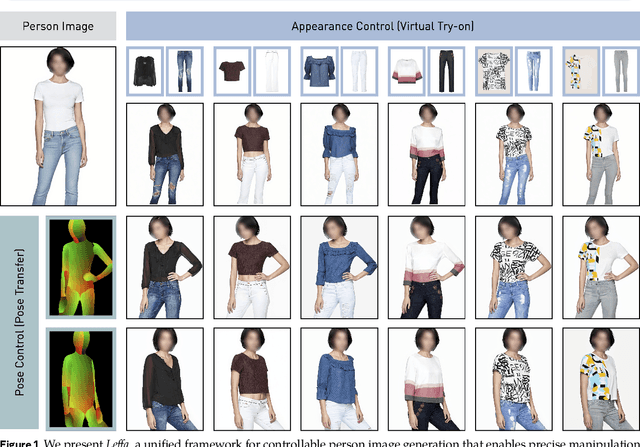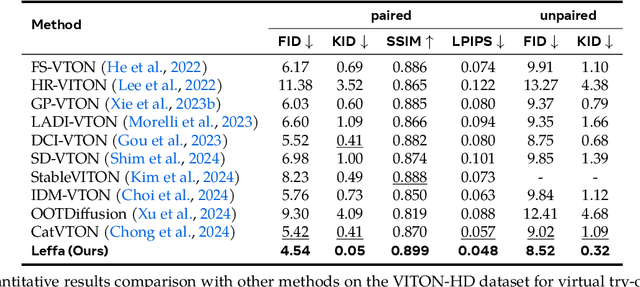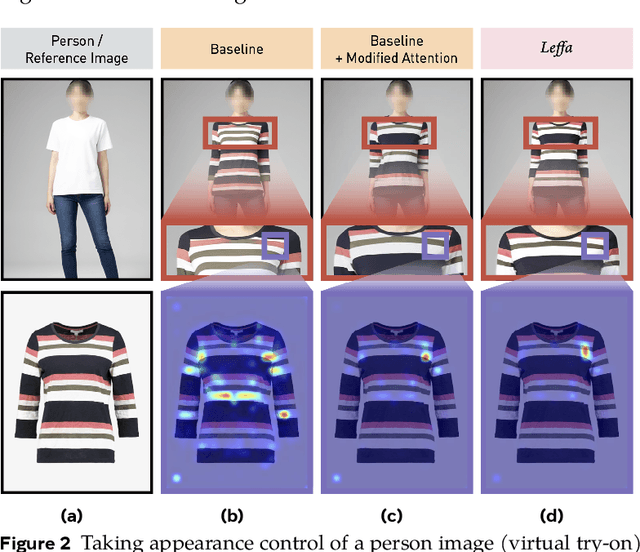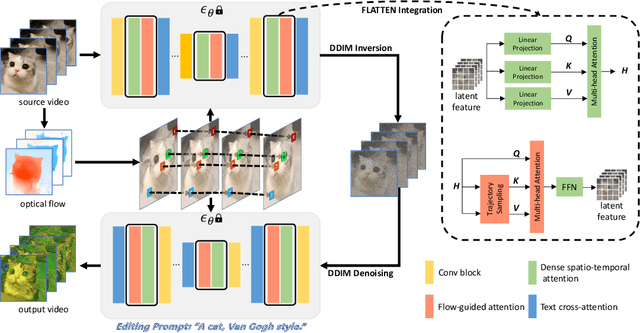Sen He
DynamicLip: Shape-Independent Continuous Authentication via Lip Articulator Dynamics
Jan 02, 2025Abstract:Biometrics authentication has become increasingly popular due to its security and convenience; however, traditional biometrics are becoming less desirable in scenarios such as new mobile devices, Virtual Reality, and Smart Vehicles. For example, while face authentication is widely used, it suffers from significant privacy concerns. The collection of complete facial data makes it less desirable for privacy-sensitive applications. Lip authentication, on the other hand, has emerged as a promising biometrics method. However, existing lip-based authentication methods heavily depend on static lip shape when the mouth is closed, which can be less robust due to lip shape dynamic motion and can barely work when the user is speaking. In this paper, we revisit the nature of lip biometrics and extract shape-independent features from the lips. We study the dynamic characteristics of lip biometrics based on articulator motion. Building on the knowledge, we propose a system for shape-independent continuous authentication via lip articulator dynamics. This system enables robust, shape-independent and continuous authentication, making it particularly suitable for scenarios with high security and privacy requirements. We conducted comprehensive experiments in different environments and attack scenarios and collected a dataset of 50 subjects. The results indicate that our system achieves an overall accuracy of 99.06% and demonstrates robustness under advanced mimic attacks and AI deepfake attacks, making it a viable solution for continuous biometric authentication in various applications.
Learning Flow Fields in Attention for Controllable Person Image Generation
Dec 12, 2024



Abstract:Controllable person image generation aims to generate a person image conditioned on reference images, allowing precise control over the person's appearance or pose. However, prior methods often distort fine-grained textural details from the reference image, despite achieving high overall image quality. We attribute these distortions to inadequate attention to corresponding regions in the reference image. To address this, we thereby propose learning flow fields in attention (Leffa), which explicitly guides the target query to attend to the correct reference key in the attention layer during training. Specifically, it is realized via a regularization loss on top of the attention map within a diffusion-based baseline. Our extensive experiments show that Leffa achieves state-of-the-art performance in controlling appearance (virtual try-on) and pose (pose transfer), significantly reducing fine-grained detail distortion while maintaining high image quality. Additionally, we show that our loss is model-agnostic and can be used to improve the performance of other diffusion models.
LAA-Net: A Physical-prior-knowledge Based Network for Robust Nighttime Depth Estimation
Dec 05, 2024



Abstract:Existing self-supervised monocular depth estimation (MDE) models attempt to improve nighttime performance by using GANs to transfer nighttime images into their daytime versions. However, this can introduce inconsistencies due to the complexities of real-world daytime lighting variations, which may finally lead to inaccurate estimation results. To address this issue, we leverage physical-prior-knowledge about light wavelength and light attenuation during nighttime. Specifically, our model, Light-Attenuation-Aware Network (LAA-Net), incorporates physical insights from Rayleigh scattering theory for robust nighttime depth estimation: LAA-Net is trained based on red channel values because red light preserves more information under nighttime scenarios due to its longer wavelength. Additionally, based on Beer-Lambert law, we introduce Red Channel Attenuation (RCA) loss to guide LAA-Net's training. Experiments on the RobotCar-Night, nuScenes-Night, RobotCar-Day, and KITTI datasets demonstrate that our model outperforms SOTA models.
Adaptive Caching for Faster Video Generation with Diffusion Transformers
Nov 04, 2024



Abstract:Generating temporally-consistent high-fidelity videos can be computationally expensive, especially over longer temporal spans. More-recent Diffusion Transformers (DiTs) -- despite making significant headway in this context -- have only heightened such challenges as they rely on larger models and heavier attention mechanisms, resulting in slower inference speeds. In this paper, we introduce a training-free method to accelerate video DiTs, termed Adaptive Caching (AdaCache), which is motivated by the fact that "not all videos are created equal": meaning, some videos require fewer denoising steps to attain a reasonable quality than others. Building on this, we not only cache computations through the diffusion process, but also devise a caching schedule tailored to each video generation, maximizing the quality-latency trade-off. We further introduce a Motion Regularization (MoReg) scheme to utilize video information within AdaCache, essentially controlling the compute allocation based on motion content. Altogether, our plug-and-play contributions grant significant inference speedups (e.g. up to 4.7x on Open-Sora 720p - 2s video generation) without sacrificing the generation quality, across multiple video DiT baselines.
MarDini: Masked Autoregressive Diffusion for Video Generation at Scale
Oct 26, 2024



Abstract:We introduce MarDini, a new family of video diffusion models that integrate the advantages of masked auto-regression (MAR) into a unified diffusion model (DM) framework. Here, MAR handles temporal planning, while DM focuses on spatial generation in an asymmetric network design: i) a MAR-based planning model containing most of the parameters generates planning signals for each masked frame using low-resolution input; ii) a lightweight generation model uses these signals to produce high-resolution frames via diffusion de-noising. MarDini's MAR enables video generation conditioned on any number of masked frames at any frame positions: a single model can handle video interpolation (e.g., masking middle frames), image-to-video generation (e.g., masking from the second frame onward), and video expansion (e.g., masking half the frames). The efficient design allocates most of the computational resources to the low-resolution planning model, making computationally expensive but important spatio-temporal attention feasible at scale. MarDini sets a new state-of-the-art for video interpolation; meanwhile, within few inference steps, it efficiently generates videos on par with those of much more expensive advanced image-to-video models.
Hyper-VolTran: Fast and Generalizable One-Shot Image to 3D Object Structure via HyperNetworks
Jan 05, 2024



Abstract:Solving image-to-3D from a single view is an ill-posed problem, and current neural reconstruction methods addressing it through diffusion models still rely on scene-specific optimization, constraining their generalization capability. To overcome the limitations of existing approaches regarding generalization and consistency, we introduce a novel neural rendering technique. Our approach employs the signed distance function as the surface representation and incorporates generalizable priors through geometry-encoding volumes and HyperNetworks. Specifically, our method builds neural encoding volumes from generated multi-view inputs. We adjust the weights of the SDF network conditioned on an input image at test-time to allow model adaptation to novel scenes in a feed-forward manner via HyperNetworks. To mitigate artifacts derived from the synthesized views, we propose the use of a volume transformer module to improve the aggregation of image features instead of processing each viewpoint separately. Through our proposed method, dubbed as Hyper-VolTran, we avoid the bottleneck of scene-specific optimization and maintain consistency across the images generated from multiple viewpoints. Our experiments show the advantages of our proposed approach with consistent results and rapid generation.
GenTron: Delving Deep into Diffusion Transformers for Image and Video Generation
Dec 07, 2023



Abstract:In this study, we explore Transformer-based diffusion models for image and video generation. Despite the dominance of Transformer architectures in various fields due to their flexibility and scalability, the visual generative domain primarily utilizes CNN-based U-Net architectures, particularly in diffusion-based models. We introduce GenTron, a family of Generative models employing Transformer-based diffusion, to address this gap. Our initial step was to adapt Diffusion Transformers (DiTs) from class to text conditioning, a process involving thorough empirical exploration of the conditioning mechanism. We then scale GenTron from approximately 900M to over 3B parameters, observing significant improvements in visual quality. Furthermore, we extend GenTron to text-to-video generation, incorporating novel motion-free guidance to enhance video quality. In human evaluations against SDXL, GenTron achieves a 51.1% win rate in visual quality (with a 19.8% draw rate), and a 42.3% win rate in text alignment (with a 42.9% draw rate). GenTron also excels in the T2I-CompBench, underscoring its strengths in compositional generation. We believe this work will provide meaningful insights and serve as a valuable reference for future research.
FLATTEN: optical FLow-guided ATTENtion for consistent text-to-video editing
Oct 09, 2023



Abstract:Text-to-video editing aims to edit the visual appearance of a source video conditional on textual prompts. A major challenge in this task is to ensure that all frames in the edited video are visually consistent. Most recent works apply advanced text-to-image diffusion models to this task by inflating 2D spatial attention in the U-Net into spatio-temporal attention. Although temporal context can be added through spatio-temporal attention, it may introduce some irrelevant information for each patch and therefore cause inconsistency in the edited video. In this paper, for the first time, we introduce optical flow into the attention module in the diffusion model's U-Net to address the inconsistency issue for text-to-video editing. Our method, FLATTEN, enforces the patches on the same flow path across different frames to attend to each other in the attention module, thus improving the visual consistency in the edited videos. Additionally, our method is training-free and can be seamlessly integrated into any diffusion-based text-to-video editing methods and improve their visual consistency. Experiment results on existing text-to-video editing benchmarks show that our proposed method achieves the new state-of-the-art performance. In particular, our method excels in maintaining the visual consistency in the edited videos.
Learning Garment DensePose for Robust Warping in Virtual Try-On
Mar 30, 2023


Abstract:Virtual try-on, i.e making people virtually try new garments, is an active research area in computer vision with great commercial applications. Current virtual try-on methods usually work in a two-stage pipeline. First, the garment image is warped on the person's pose using a flow estimation network. Then in the second stage, the warped garment is fused with the person image to render a new try-on image. Unfortunately, such methods are heavily dependent on the quality of the garment warping which often fails when dealing with hard poses (e.g., a person lifting or crossing arms). In this work, we propose a robust warping method for virtual try-on based on a learned garment DensePose which has a direct correspondence with the person's DensePose. Due to the lack of annotated data, we show how to leverage an off-the-shelf person DensePose model and a pretrained flow model to learn the garment DensePose in a weakly supervised manner. The garment DensePose allows a robust warping to any person's pose without any additional computation. Our method achieves the state-of-the-art equivalent on virtual try-on benchmarks and shows warping robustness on in-the-wild person images with hard poses, making it more suited for real-world virtual try-on applications.
Diffused Heads: Diffusion Models Beat GANs on Talking-Face Generation
Jan 06, 2023



Abstract:Talking face generation has historically struggled to produce head movements and natural facial expressions without guidance from additional reference videos. Recent developments in diffusion-based generative models allow for more realistic and stable data synthesis and their performance on image and video generation has surpassed that of other generative models. In this work, we present an autoregressive diffusion model that requires only one identity image and audio sequence to generate a video of a realistic talking human head. Our solution is capable of hallucinating head movements, facial expressions, such as blinks, and preserving a given background. We evaluate our model on two different datasets, achieving state-of-the-art results on both of them.
 Add to Chrome
Add to Chrome Add to Firefox
Add to Firefox Add to Edge
Add to Edge